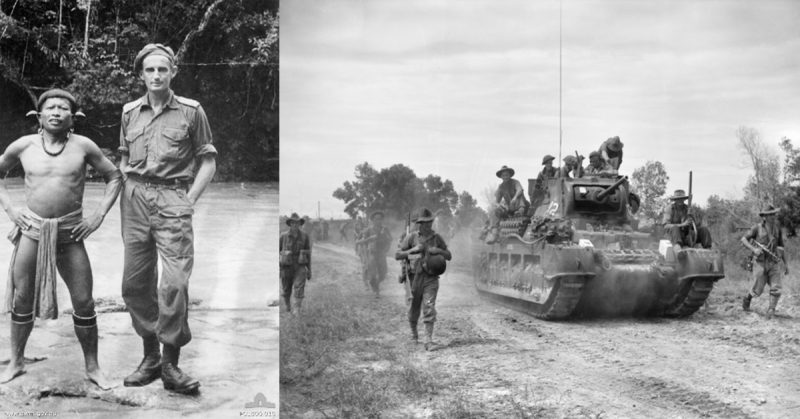In 2014, anthropologist Dr. Christine Helliwell was conducting field research with the Diak tribespeople who live in the in the highlands of Malaysian Borneo, near the Indonesian border. While doing her research, she stumbled upon anecdotal evidence of a highly respected Australian Special Forces Unit that operated in the area during Wold War II.
Dr. Helliwell was expecting some resistance to her research, but she found to her surprise that the members of the Australian Z Force were fondly remembered by the local people while the Japanese were not well respected.
The fact that the local tribes respected the Australian forces, and that the members of Australia’s Z Force worked hard to get on with the local people, led to them working together to form a highly effective irregular or guerrilla cells, that fought with great success in the jungles of Borneo.
Returning to Australia, she began lobbying with a Z Force Veteran, 96-year-old Jack Tredrea from Adelaide for some form of recognition for the work done by the members of Z Force. Mr. Tredrea is one of the very few remaining members of Z Force still living, and he tells a tale of incredible bravery of the Australian forces who took part in Operation Semut.
The operation took place in Malaysian Borneo when small groups of servicemen parachuted into the jungle armed with weapons and cyanide pills. They had no idea if the Japanese had invaded and if so, where they were, so they leaped into the jungle completely blind but were relieved to find that the Japanese had not yet arrived and that the local tribes were friendly toward the Australians.
In an interview with ABC News, Mr. Tredrea said, “Semut consisted of Semut 1, 2, 3, and 4, and each one had eight personnel … at the end of the war we [had made] over 2,900 kills and taken over 300 prisoners.”
Z Force had around 1,700 members altogether, and in addition to those who served in the jungles, there were also a range of support services, some undertaken by women who provided a code and cipher service.
Dr. Helliwell said that she had collected tales of the services provided by Z Force, “There were groups that went into rescue American airmen that went down, coming in at night on a submarine and then these little canoes. Those are really brave and risky things to do.”
For 30years after their mission, Z force was sworn to secrecy, but now the details of their hair-raising missions have been revealed.
The lobbying done by Dr. Helliwell and Jack Tredrea has borne fruit and, at long last, a permanent plaque has been unveiled at the Australian War Memorial in Canberra in recognition of the work done by these brave men. The unveiling was attended by hundreds of people including the 20 remaining living members of the force along with families and friends of those who served. Many local dignitaries and ten families of New Zealanders who also served were guests as well.
Mr. Tredrea was honoured to unveil the plaque, “For all these years no-one knew anything about Z which I think was a great pity because even the SAS today tell us that they are still working on what we started,” he said.
Dr. James succinctly summed it up by saying, “The members of Z Special Unit are amongst the bravest of the brave.”
